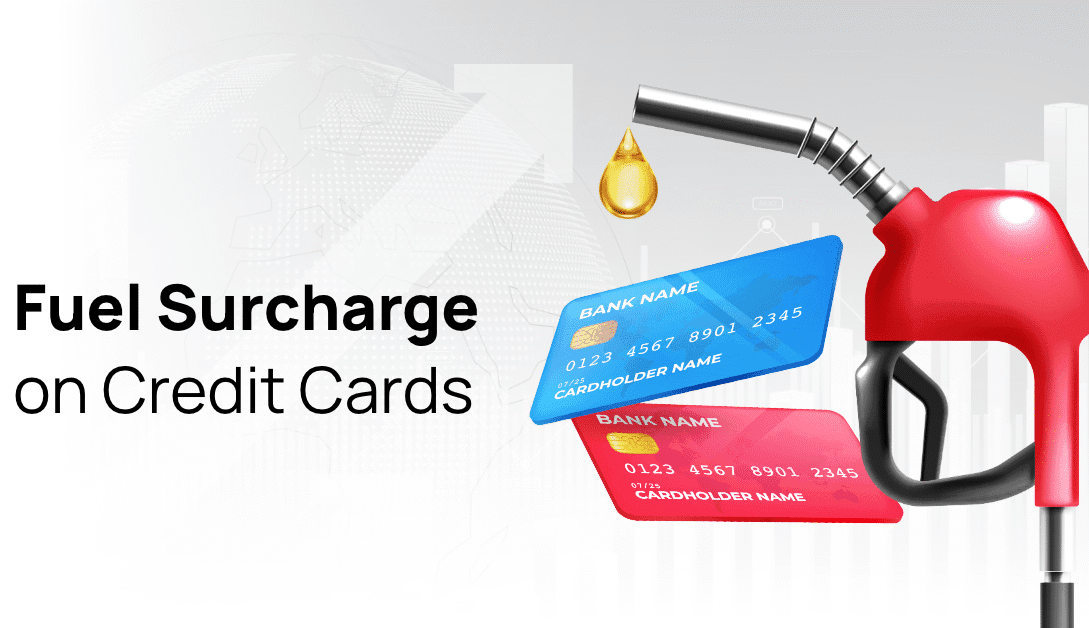A fuel surcharge waiver is a valuable credit card feature that helps cardholders save on extra charges when paying for petrol or diesel with their credit card. Here’s a clear breakdown of how it works, its benefits and the key points to keep in mind.
What Is a Fuel Surcharge?
Fuel stations often levy a fuel surcharge typically 1%–3% of the fuel transaction amount to cover the processing costs of accepting credit card payments.
How Does the Waiver Work?
- With a fuel surcharge waiver your credit card issuer absorbs this fee either by not charging it at all or by refunding it after the transaction.
- In practice you pay the total (fuel + surcharge) at the pump but the waived surcharge amount is later credited back to your account usually in the following billing cycle or as a monthly cumulative reversal.
Example calculation:
- If your card offers a 2.5% waiver and you purchase ₹3000 of fuel:
- Surcharge = ₹3000 × 2.5% = ₹75
- You pay ₹3075 at the pump.
- The ₹75 is returned to your card statement later.
- Surcharge = ₹3000 × 2.5% = ₹75
- If your card offers a 2.5% waiver and you purchase ₹3000 of fuel:
How to Avail the Waiver
- Use an eligible credit card: Only some cards come with this benefit—most commonly fuel credit cards or select co-branded cards.
- Pay at partnered fuel stations: Most waivers apply only at designated stations so check your card’s terms for the eligible outlets.
- Follow transaction limits: Waivers might apply only for transactions within a specific range (e.g. ₹400–₹4000 per transaction).
- Watch for monthly caps: There is often a maximum waiver limit per billing cycle such as ₹250 or ₹500 per month.
- Monitor your statements: The waiver is typically reflected as a refund or statement credit not as an instant discount.
Key Benefits
- Immediate cost savings: Keeps your actual fuel cost closer to pump price—no hidden surcharges.
- Cumulative savings: Regular users can save a significant amount over time especially if they refill frequently with a compliant card.
- Enhanced rewards: Many cards combine waivers with reward points or cashback for fuel purchases.
Points to Remember
- No waiver on taxes: The waiver typically does not cover taxes on the surcharge—tax portions may still apply and be payable by the cardholder.
- Check eligibility: Cards and fuel stations often change partnerships or waiver terms. Always verify current eligibility before expecting a waiver.
- Annual fees: Some fuel cards come with annual charges. Compare the savings from the waiver with any fees incurred.
- Minimum transaction amount: A lower limit may apply (e.g. waiver valid only for purchases above ₹400) and transactions below this amount might not get the waiver.
- Redemption timelines: The crediting of the waiver could take one billing cycle to appear.
Conclusion
A fuel surcharge waiver is an excellent way to save money on your everyday fuel expenses if you frequently pay by credit card. Understanding the conditions eligibility and limits will maximize your savings and make your fuel purchases more rewarding.

I am a digital marketing executive as well as content writer in the income tax and credit cards category. My goal is to provide simple, interesting and reliable information to readers through my articles so that they always stay updated with the world of income tax and credit cards.




Keep your favorite casino in reach via mirror
При заказе услуг важно учитывать xrumer цена https://www.olx.ua/d/uk/obyavlenie/progon-hrumerom-dr-50-po-ahrefs-uvelichu-reyting-domena-IDXnHrG.html, которая зависит от сложности работы.
g6jw4n
Отличный материал опубликован по ссылке. Читается легко и интересно.
Я легко стежу за новинами, коли вони подані у вигляді ключових podii. Це надає структурованості.
Tried out bat939 the other day, not bad! Good for casual gaming. Definitely worth checking out at bat939